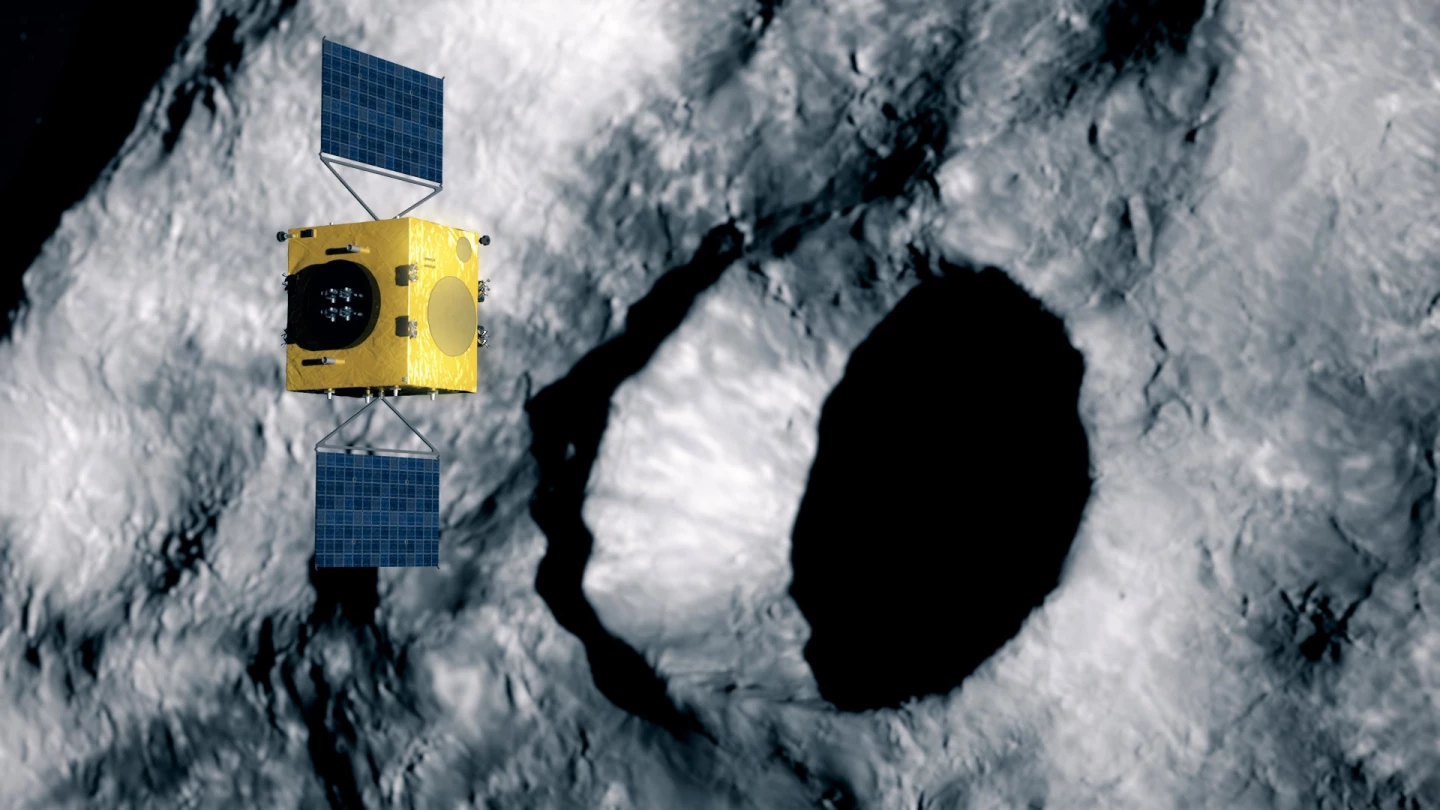ESA has awarded €129.4 million of funding to the planetary defense mission Hera, which will observe the results of humanity’s first attempt to intentionally alter the orbit of a solar system asteroid. The mission could be the fist step along the road to creating a defense strategy to guard the Earth against future asteroid impacts.
Some 66 million years ago, ancient Earth was struck by an enormous asteroid that gouged out a 180 km (112 mile)-wide crater now hidden beneath the Yucatán Peninsula in Mexico. This impact triggered, or at least contributed to the mass extinction of the dinosaurs, and thus fundamentally altered the evolutionary path of life on our planet.
Our blue marble is riddled by similar scars that serve as stark reminders of the very real and inevitable threat posed by asteroid impacts. Thankfully, humanity has an ace up its sleeve that could one day avert a global catastrophe the like of which wiped out the dinosaurs – a rapidly advancing space program.
ESA’s upcoming Hera spacecraft represents one half of an international endeavor known as the Asteroid Impact & Deflection Assessment (AIDA) mission. AIDA’s main goal is to examine the feasibility of deflecting potentially hazardous asteroids away from Earth by altering their orbital characteristics.
The target of the international mission is a binary asteroid system called the Didymos pair, which is comprised of a mountain-sized 780 meter (2,559 ft)-diameter primary body, playfully referred to as Didymain, that is orbited by a 160 meter (525 ft)-wide "moonlet" known as Dimorphos, or informally as Didymoon.
In July 2021 NASA’s DART spacecraft will be the first of two large probes to launch as part of the AIDA endeavor. In September 2022, having arrived in orbit and observed the Didymos pair, DART will be directed to crash into the smaller of the two asteroids. The impact should create a 20 meter (65 ft)-wide crater on the surface of Didymoon, and in so doing alter the orbital speed and path of the wandering giant.

ESA’s Hera spacecraft is being designed to observe the aftermath of this cosmic experiment. The newly signed €129.4 million contract will cover the design, manufacturing and testing of the Hera mission.
Hera will be accompanied on its epic journey to explore the binary system by a pair of CubeSats.
The Juventas CubeSat is designed to unfurl an antenna larger than its main body, and perform the first ever subsurface radar survey of a near-Earth asteroid. The technology used in the creation of the radar system was first pioneered by the Rosetta spacecraft as it explored the comet 67P/Churyumov–Gerasimenko. Meanwhile the second CubeSat, christened APEX, will examine the make-up of the wandering cosmic pair.
A grand total of 17 European countries will be involved in the construction of Hera, each tasked with a different yet interconnected aspect of the probe’s development, from the design of reaction wheels to the fabrication of power and propulsion systems.
The spacecraft will host an advanced suite of scientific equipment including a compact laser radar system, a thermal infrared instrument, and an Asteroid Framing Camera (AFC) fitted with a telescope and filters capable of shedding light on the physical properties of Didymoon’s surface. The AFC chosen for the mission is the same design as the camera that was mounted on NASA’s Dawn spacecraft, and successfully returned stunning imagery of the dwarf planet Ceres.
Several new technologies are under development for the mission, including a system that will allow the spacecraft to navigate around in the unpredictable near-asteroid environment autonomously.
The 870-kg (1,918-lb) probe is currently slated to launch in September 2022, and if all goes to plan will arrive in orbit around its isolated targets in December 2026. Having rendezvoused, Hera will get to work mapping the surface of Didymoon and its larger partner Didymain.
The region surrounding the DART impact crater will be imaged to a resolution of 10 cm (3.9 in). Data collected by Hera on the shape of the crater along with the surface properties and internal structure of the asteroid will be vitally important to scientists in validating the models needed to plan future asteroid deflection missions.
However, the most important data collected by Hera is likely to be the measurements taken of Didymoon’s mass. This information is vital to scientists hoping to build an accurate model of the impact event to a high degree of certainty.
Source: ESA







